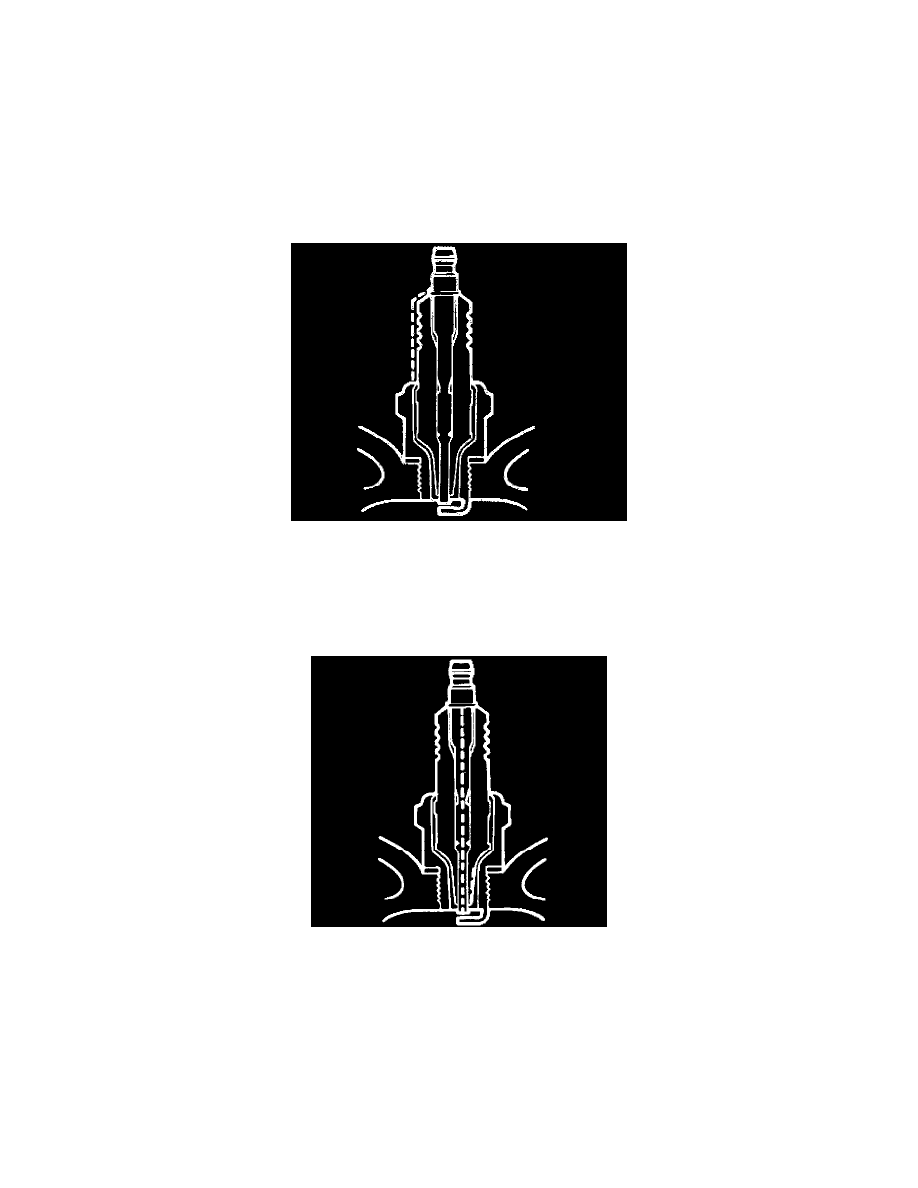Monte Carlo V6-3.4L VIN E (2000)

Spark Plug: Testing and Inspection
Normal spark plug operation will result in brown to grayish-tan deposits appearing on the portion of the spark plug that projects into the cylinder area. A
small amount of red-brown, yellow, and white powdery material may also be present on the insulator tip around the center electrode. These deposits are
normal combustion by-products of fuels and lubricating oils with additives. Some electrode wear will also occur.
Engines which are not running properly are often referred to as misfiring. Spark plug misfiring can be indicated in a number of ways:
^
Poor fuel economy
^
Power loss
^
Loss of speed
^
Hard starting
^
Poor engine performance
Flashover occurs when a damaged spark plug boot, along with dirt and moisture, permits the high voltage charge to short over the insulator to the spark
plug shell or the engine. Should misfiring occur before the recommended replacement interval, locate and correct the cause.
Carbon fouling of the spark plug is indicated by dry, black carbon (soot) deposits on the portion of the spark plug in the cylinder. Excessive idling or
slow speeds under light engine loads can keep the spark plug temperatures so low that these deposits are not burned off. Rich fuel mixtures or poor
ignition system output may also be the cause.
Oil fouling of the spark plug is indicated by wet oily deposits on the portion of the spark plug in the cylinder, usually with little electrode wear. This may
be caused by oil getting past worn piston rings or valve seals. This condition also may occur during break-in of new or newly overhauled engines.
